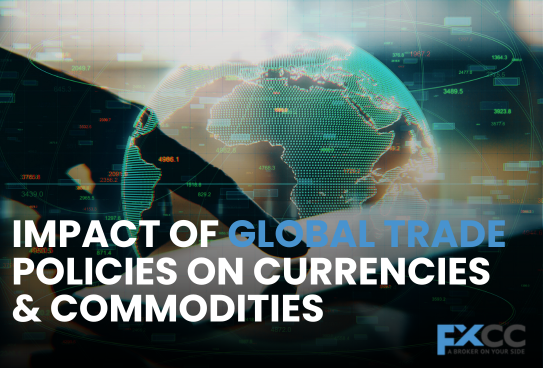Introduction
Global trade policies are like the strings of a puppet show, pulling and influencing the movements of currencies and commodities around the world. These policies shape the way countries exchange goods and services, impacting not only businesses but also everyday consumers. Ever wondered why the price of your favorite imported chocolate suddenly went up or why the exchange rate changes when you’re planning an international vacation? The answer often lies in the realm of global trade policies. Let’s dive in to understand how these rules and regulations affect currency and commodity markets and, ultimately, our daily lives.

1. Understanding Global Trade Policies
Global trade policies are the rules and agreements that govern how countries exchange goods and services with each other. These policies can include tariffs, quotas, trade agreements, and sanctions, each designed to protect domestic industries, promote exports, or sometimes retaliate against other nations.
2. The Relationship Between Trade Policies and Currency
Trade policies directly influence the value of currencies in the global market. When a country imposes tariffs or quotas, it affects the demand and supply for its currency. For instance, if the U.S. imposes high tariffs on Chinese goods, it might reduce the demand for the Chinese Yuan, causing its value to drop against the U.S. dollar.
3. How Tariffs Affect Currency Values
Tariffs are like a tax on imported goods. When a country imposes tariffs, it makes foreign products more expensive, reducing their demand. This decreased demand for foreign goods also reduces the need for foreign currency, which can lower its value. Conversely, countries imposing tariffs might see their currency strengthen due to increased demand for local products.
4. Trade Agreements and Their Impact on Markets
Trade agreements, such as the North American Free Trade Agreement (NAFTA) or the European Union (EU), create more accessible trade routes between countries. These agreements often lead to an increase in trade volume and currency stability. When countries collaborate through trade agreements, it fosters economic stability, positively impacting their currencies and commodity prices.
5. How Exchange Rates Affect International Trade
Exchange rates are crucial in global trade because they determine how much one currency is worth in terms of another. A favorable exchange rate can make a country’s exports cheaper and more competitive globally, boosting economic growth. On the other hand, an unfavorable rate can make imports more expensive, potentially increasing inflation.
6. Currency Wars: A Result of Trade Disputes?
Currency wars occur when countries competitively devalue their currencies to gain an export advantage. When countries engage in trade disputes, they might lower their currency’s value to make their products cheaper abroad, boosting exports. However, this can lead to instability and retaliatory actions from other nations, disrupting global markets.
7. Impact of Trade Policies on Commodity Prices
Commodities like oil, gold, and agricultural products are heavily affected by trade policies. For example, if a major oil-exporting country faces sanctions, it can lead to a shortage, driving up oil prices globally. Similarly, trade agreements can make certain commodities more accessible, stabilizing their prices.
8. The Effect of Sanctions on Currency and Commodities
Sanctions are restrictions placed by one country on another to limit its economic activity. These restrictions can lead to a decline in the sanctioned country’s currency value and affect global commodity prices. For example, sanctions on Iran or Russia have historically impacted oil prices due to reduced supply in the global market.
9. Trade Wars and Their Ripple Effects
Trade wars, like the recent U.S.-China trade conflict, can have widespread effects on global markets. These disputes often lead to increased tariffs, sanctions, and quotas, affecting currency values and commodity prices. The uncertainty and instability caused by trade wars can lead to volatile markets, impacting global economic growth.
10. The Future of Global Trade and Market Stability
As we move forward, global trade policies will continue to shape the future of currency and commodity markets. With the rise of digital currencies and more emphasis on sustainable trade practices, we might see new trade agreements and policies that promote economic stability and growth. However, geopolitical tensions and economic nationalism could also lead to more trade disputes, affecting market stability.

Conclusion
Global trade policies are powerful tools that influence the world’s economic landscape. From affecting currency values to shaping commodity prices, these policies play a critical role in the global economy. Understanding how trade policies work can help us better grasp the complexities of international trade and its impact on our daily lives. As the world continues to evolve, staying informed about these changes will be crucial for businesses and individuals alike.


